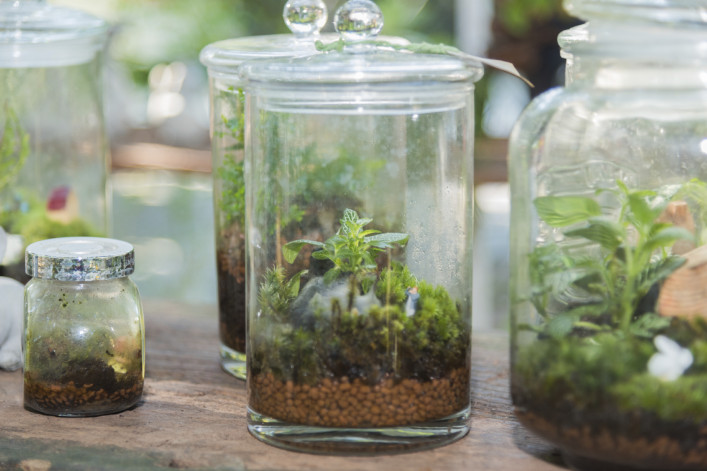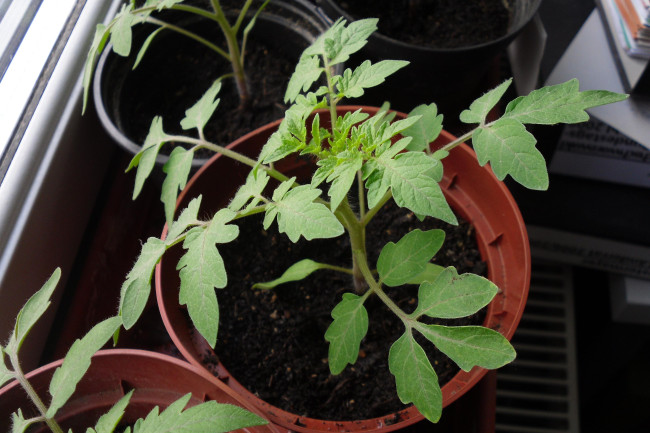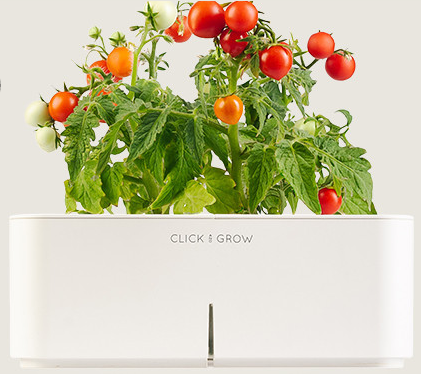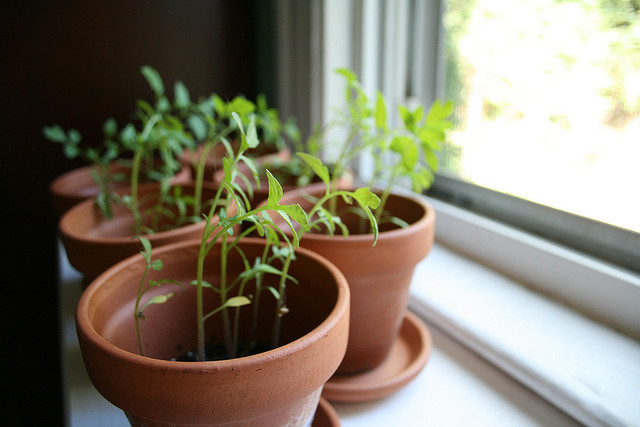Celebrate spring: How to start a garden in even the smallest New York apartment

Terrariums can be a space-starved New Yorkers best friends.
Gardening has always been a tricky business for New Yorkers — we’re hopelessly overcommitted, fire escape gardens are illegal, and most of us are just plain lousy at keeping anything other than ourselves alive. Throw in cramped, dark and sometimes Dickensian apartments, and it seems like most New York abodes are hostile to all forms of non-human life.
But not so: Container gardening is tailor-made for city apartments, since the plants take up so little actual space, and are a cinch to care for.
The practice is literally what it sounds like — growing small plants in pots, terrariums, window boxes and other small vessels. Unlike traditional gardening, where you need land, space, ample sunlight and water, container gardening is fairly straightforward, with a low investment (but lots of rewards).
[Note: This article first ran on April 24, 2015.]
The basics
The most important tip is to pick a plant that fits with the amount of light in your apartment, says Erin Marino, marketing manager at Lower East Side boutique plant shop The Sill. “Let’s face it,” Marino says. “Most plants prefer bright, indirect light, but many have adapted to lower light conditions.”
If you have an apartment with fewer rays of sunshine, opt for low-light favorites like the snake plant, ZZ plant, or pothos. Some herbs, like mint, chamomile, thyme, parsley, and cilantro do well in shade, too.
Blessed with a sun-drenched apartment? Then a trendy succulent or cactus may be right, or herbs like lavender, basic, or rosemary.
If you’re up for more of a challenge, Marino recommends upping your game with plants like the Fiddle Leaf Fig, Monstera Deliciosa, Rex Begonia, or Rubber Tree, which are just a bit more fickle. A Fiddle Leaf Fig (a type of ficus plant), for example, needs to be watered once a week, doesn't like to be moved around and needs a stable environment to thrive.
When it comes to window boxes, Marino recommends asking the building's manager or super first to avoid any violations, fines, or unhappy neighbors. "If you get the OK to put up boxes, make sure they are well-secured to the window frame. If you're not handy, definitely call a professional. The last thing you want is for your window box to become lose and potentially cause damage to the building or a passerby. Letting your landlord know a professional is installing the box might also put him at ease," she says.
"Another concern, especially in NYC, is pests. If you don't want pigeons, squirrels, or rodents scampering through your window boxes — try different natural or store-bought repellents, or keep your window boxes on the inside of your windows, i.e. your sill," she says (photos of that below).
Home sweet home
Next, it’s time to build your plant’s new home from the ground up. That means investing in good, store-bought potting soil (that contains peat moss and bark), Marino says, or making your own.
For window boxes, choose a lightweight, fast-draining, potting soil.
It’s also best to choose a container that isn’t plastic. The Sill recommends a stoneware, fiberglass, ceramic or terra cotta pot, though Pinterest would also attest that old tea, coffee, and candle containers also make functional, and quaint, holders.
You can also opt for an on-trend terrarium, which combine form with function. “Enclosed terrariums — with a lid or bottle neck — (make) caring for plants a breeze,” Marino says. “The enclosed vessel does most of the work for you by keeping humidity levels high,” but adds that it’s important to pick plants that do well in humidity and low, indirect light, like ferns (note: not cacti). Terrariums keeps moisture in so you don't have to worry about watering your plant as much — they also look cool.
All containers should also have a place for excess water to drain from the roots — otherwise, too much water can drown the plant.
If your planter has drainage holes, it was probably sold with a saucer. If not, use a plate or buy a plastic saucer and a hardware or gardening store, Marino suggests.
You can also add drainage to a planter or window box by lining the bottom with a layer of rocks (The Sill recommends lava rocks because they're porous, and you can add charcoal, too). Since, in this case, all the water will stay in the planter, it's even more important not to overwater it.
Cultivating a green thumb
Once your plant is potted, it’s on to good maintenance. Follow the care instructions for your specific plant, making sure to water and prune when necessary.
"Regular pruning keeps plants in a restricted space healthy and happy — and pruned plants grow back more thickly and compactly," says Marino. Herbs especially benefit from constant harvesting.
Don’t cram plants into boxes, either. Leave room for roots to breath and plants to grow.
And the biggest tip to keep your houseplant happy and healthy for its life? Repotting. “It doesn’t necessarily mean providing your plant with a bigger pot,” Marino says. It’s more about giving your plant fresh soil, which you should do every 12-18 months.
Signs you need to repot include:
- Roots growing through the drainage hole at the bottom of the planter
- Roots pushing the plant up and out of the planter
- Plant growing slower than normal
- Plant becoming too top heavy and falling over easily
- Plantrying out quickly
- Noticeable salt and mineral build up on the plant or planter
- Lackluster and limp foliage
Above all, it’s important to remember your Shangri-La will take time. “Start small,” Marino advises. “And if your plant dies, don’t stress. It doesn’t mean you’re doomed for a plant-less existence.”
3 window box ideas
Tips and photos courtesy of The Sill:

Sedum Window Box (for bright to moderate, direct light)
If you have a brown thumb or busy schedule, this is the box for you. Sedum’s fleshy, succulent leaves mean you can skip a watering or two. Just make sure to find it a sunny spot to call home. They recommend an eastern or southern-facing sill that receives direct light.

Herb Window Box (for bright to moderate, indirect light)
Herbs are a popular choice for window boxes because their useful. For a shadier spot, they recommend mint, chamomile, thyme, parsley, or cilantro. For a sunnier sill try basil, lavender, oregano, rosemary or chives.

Leafy Low-Light Window Box (for moderate to low, indirect light)
The Sill created these window boxes for a start-up’s NYC office. The windows are large in size, but they don't get sunlight for more than a few hours a day. If your set-up is like this, choose a variety of moderate to low-light plants including areca palms, pothos, philodendrons, ivies, and dracaenas.
You Might Also Like

























